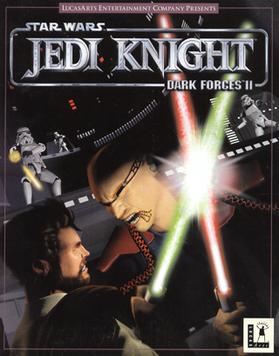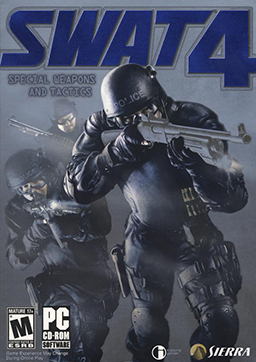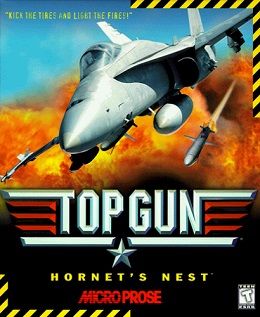
Quake II is a 1997 first-person shooter video game developed by id Software and published by Activision. It is the second installment of the Quake series, following Quake. The game's storyline is continued in its expansions and Quake 4.

Soldier of Fortune is a first-person shooter video game developed by Raven Software and published by Activision in 2000 for Microsoft Windows. It was later released for the PlayStation 2, as well as the Dreamcast, while Loki Software also made a port for Linux. It was digitally re-released on GOG.com on October 2, 2018, along with its two successors. The player takes on the role of a U.S. mercenary as he trots around the globe hoping to halt a terrorist nuclear weapons plot.

Tom Clancy's Rainbow Six is a 1998 tactical shooter video game developed and published by Red Storm Entertainment for Microsoft Windows, with later ports for the Nintendo 64, PlayStation, Mac OS, Game Boy Color, and Dreamcast. It is the first installment in the Rainbow Six series. Based on the Tom Clancy novel of the same name, the game follows Rainbow, a secret international counterterrorist organization, and the conspiracy they unravel as they handle a seemingly random spike in terrorism.

Star Wars Jedi Knight: Dark Forces II is a 1997 first-person shooter video game developed and published by LucasArts for Microsoft Windows. It is the sequel to 1995's Star Wars: Dark Forces, and the second installment in the Star Wars: Jedi Knight series. The story, set in the fictional Star Wars expanded universe one year after the film Return of the Jedi, follows returning protagonist Kyle Katarn, a mercenary working for the New Republic, who discovers his connection to the Force and "The Valley of the Jedi", an ancient source of power. With his father having been murdered years prior by the Dark Jedi Jerec and his followers over the Valley's location, Katarn embarks on a quest to confront his father's killers and find the Valley before they do.

Unreal Tournament 2003 is a first-person arena shooter video game developed by Epic Games and Digital Extremes, and published by Infogrames under the Atari brand name. The game is part of the Unreal franchise, and is a sequel to 1999's Unreal Tournament. Like its predecessor, the game is designed mainly for multiplayer gaming.

Unreal Tournament 2004 is a first-person arena shooter video game developed by Epic Games and Digital Extremes. Part of the Unreal franchise, it is the third game in the Unreal Tournament series and the sequel to Unreal Tournament 2003.

Midtown Madness is a 1999 racing game developed by Angel Studios and published by Microsoft for Microsoft Windows. The demo version was released in April 1999. Two sequels followed, with Midtown Madness 2 released in September 2000 and Midtown Madness 3 released in June 2003 for the Xbox. The game is set in Chicago; the object is for the player to win street races and obtain new cars.

Trespasser is a 1998 action-adventure video game developed by DreamWorks Interactive and published by Electronic Arts for Microsoft Windows. The game serves as a sequel to the 1997 film The Lost World: Jurassic Park, taking place a year after the film's events. Players control Anne, the sole survivor of a plane crash that leaves her stranded on a remote island with genetically engineered dinosaurs. It features the voices of Minnie Driver as Anne and Richard Attenborough as John Hammond, reprising his role from the film series.

Giants: Citizen Kabuto is a third-person shooter video game with real-time strategy elements. It was the first project for Planet Moon Studios, which consisted of former Shiny Entertainment employees who had worked on the game MDK in 1997. Giants went through four years of development before Interplay Entertainment published it on December 7, 2000, for Microsoft Windows; a Mac OS X port was published by MacPlay in 2001, and the game was also ported to the PlayStation 2 later that year.

Star Wars: Force Commander is a real-time strategy video game released for the Microsoft Windows platform in March 2000. It was co-developed by Ronin Entertainment and LucasArts, and published by LucasArts. Its plot interweaves between Star Wars: A New Hope and Return of the Jedi, taking place in key battles. Peter McConnell created remixed tracks of John Williams's original score with influences from hard rock and techno music.

Tom Clancy's Rainbow Six: Rogue Spear is a 1999 tactical first-person shooter video game developed and published by Red Storm Entertainment for Microsoft Windows, with later ports for the Dreamcast, Mac OS, PlayStation, and Game Boy Advance. The sequel to 1998's Tom Clancy's Rainbow Six, it is the second installment in the Rainbow Six series and the last to be published by Red Storm before its acquisition by Ubi Soft in 2000. The game's plot follows the secret international counterterrorist organization Rainbow as they investigate nuclear terrorism in Eastern Europe.

SWAT 3: Close Quarters Battle is a 1999 tactical first-person shooter video game developed by Sierra Northwest and published by Sierra Entertainment exclusively for Microsoft Windows. It is the seventh installment of the Police Quest series and the third installment in the SWAT subseries. SWAT 3 follows the Los Angeles Police Department Metropolitan Division SWAT team as they combat a wave of violent crime and terrorism in Los Angeles in the lead-up to a nuclear disarmament treaty signing.

NBA Live 99 is the fifth installment of the NBA Live video games series. The cover features Antoine Walker of the Boston Celtics. The game was developed by EA Sports and released on November 4, 1998, for the Nintendo 64, and then on November 10, 1998, for the Windows and PlayStation. Don Poier is the play-by-play announcer. It was the first NBA Live game released for Nintendo 64. NBA Live 99 was followed by NBA Live 2000.

SWAT 4 is a 2005 tactical first-person shooter video game developed by Irrational Games and published by Sierra Entertainment exclusively for Microsoft Windows. It is the ninth installment in the Police Quest series and the fourth installment in the SWAT subseries. In SWAT 4, the player commands a police SWAT team in the city of Fairview, New York. Unlike its predecessor, SWAT 3: Close Quarters Battle, SWAT 4 does not have an overarching plot. Instead, gameplay takes place over a series of unconnected deployments of the player's SWAT team, as they are sent to apprehend criminals, terrorists, gangs, and cults in and around Fairview.

South Park is a first-person shooter video game based on the American animated sitcom of the same name. The game was developed by Iguana Entertainment, using a modified version of the game engine used in Turok 2: Seeds of Evil, and published by Acclaim Entertainment for the Nintendo 64 in 1998 for North America and in 1999 for Europe. It was later ported to Microsoft Windows and PlayStation in 1999 for the release year to coincide with the film South Park: Bigger, Longer & Uncut.

Waterworld is a series of video games released for the Super Nintendo Entertainment System, Virtual Boy, MS-DOS, Microsoft Windows and Game Boy, based on the film of the same name, along with unpublished versions for the Mega Drive/Genesis, Sega Saturn, Atari Jaguar, 3DO and PlayStation. These games were produced by Ocean Software. The SNES and Game Boy games were released only in Europe in 1995 and the Virtual Boy game was released exclusively in North America in November 1995. It was released for PC in 1997. The game received widespread negative reviews and the version released for the Virtual Boy is generally considered to be the worst game of its 22 releases.

Mat Hoffman's Pro BMX is a BMX video game endorsed by Mat Hoffman and the first game to be published by Activision under the Activision O2 label. It is similar to the Tony Hawk's series and competed directly with Acclaim Entertainment's Dave Mirra Freestyle BMX. Despite a planned release in fall of 2000, the game was released in May 2001 for the PlayStation and Game Boy Color, followed by Dreamcast, Microsoft Windows and Game Boy Advance.

Heavy Gear II is a mecha based first-person shooter video game. Set in Dream Pod 9's Heavy Gear universe, the game was developed and published by Activision in 1999 for Microsoft Windows; it was ported to Linux in 2000 by Loki Software. It is a sequel to the 1997 video game Heavy Gear.

Top Gun: Hornet's Nest is a 1998 combat flight simulation game developed by Zipper Interactive and published by MicroProse for Microsoft Windows. It is loosely based on the 1986 film Top Gun, and is a sequel to the 1996 game Top Gun: Fire at Will. The game was criticized for its lack of realism and its flight physics.



















